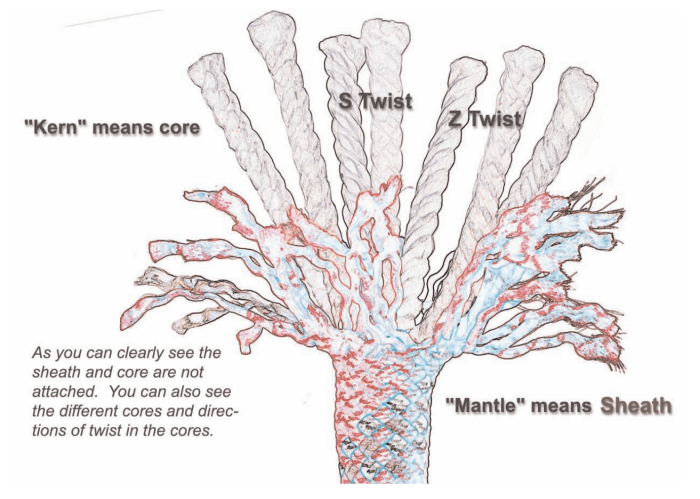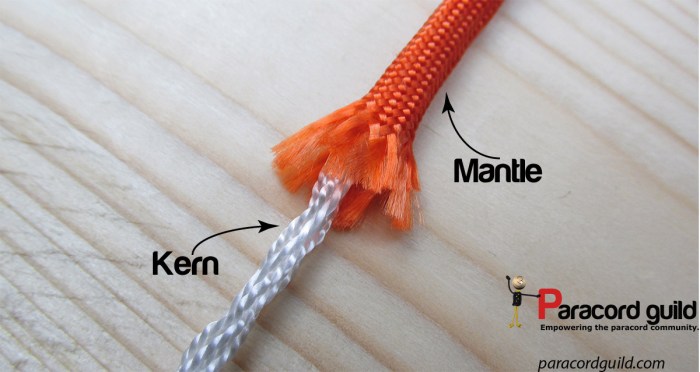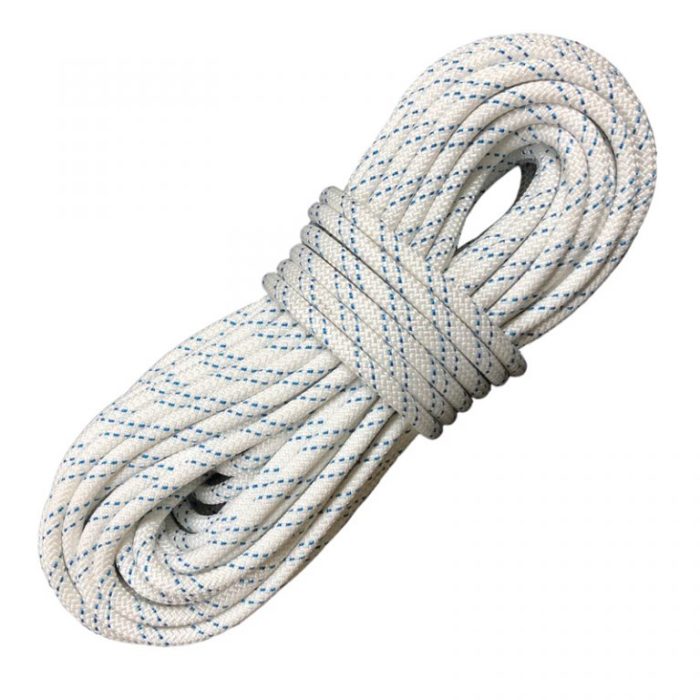The kern of a kernmantle rope is its lifeblood, providing the strength, durability, and flexibility that make these ropes essential for a wide range of applications. Understanding the role of the kern is crucial for selecting and maintaining kernmantle ropes effectively.
In this comprehensive guide, we will delve into the world of kernmantle ropes, exploring the different types of kerns, their functions, and the factors that affect their performance. We will also provide practical advice on maintaining and inspecting kernmantle ropes to ensure their longevity and safety.
Definition of Kern and Kernmantle Rope

In a kernmantle rope, the kern is the central core that provides strength and stability to the rope. It is typically made of high-strength materials such as nylon, polyester, or aramid fibers. The kern is surrounded by a protective sheath, or mantle, that protects it from abrasion and other damage.
Types of Kerns in Kernmantle Ropes
There are two main types of kerns used in kernmantle ropes: twisted and braided. Twisted kerns are made by twisting together multiple strands of yarn, while braided kerns are made by braiding together multiple strands of yarn.
- Twisted Kerns:Twisted kerns are more common and less expensive than braided kerns. They are also more flexible and easier to handle.
- Braided Kerns:Braided kerns are stronger and more durable than twisted kerns. They are also less likely to stretch or creep under load.
Functions of the Kern in a Kernmantle Rope
The kern plays a vital role in the performance of a kernmantle rope. It provides the rope with its strength, durability, and flexibility. The kern also helps to absorb energy and resist impact forces.
- Strength:The kern is the primary load-bearing component of a kernmantle rope. It is responsible for transmitting the load from the climber to the anchor.
- Durability:The kern is protected from abrasion and other damage by the mantle. This makes kernmantle ropes very durable and long-lasting.
- Flexibility:The kern is flexible enough to allow the rope to be tied into knots and bent around corners.
- Energy Absorption:The kern helps to absorb energy when the rope is loaded. This helps to reduce the shock load on the climber and the anchor.
- Impact Resistance:The kern helps to resist impact forces. This makes kernmantle ropes ideal for use in climbing and other activities where the rope may be subjected to impact loads.
Factors Affecting Kern Performance
There are a number of factors that can affect the performance of the kern in a kernmantle rope. These factors include the material composition, construction, and environmental conditions.
- Material Composition:The material composition of the kern can affect its strength, durability, and flexibility. Nylon kerns are strong and durable, but they are not as flexible as polyester kerns. Polyester kerns are more flexible, but they are not as strong as nylon kerns.
- Construction:The construction of the kern can also affect its performance. Twisted kerns are more flexible than braided kerns, but they are not as strong. Braided kerns are stronger than twisted kerns, but they are not as flexible.
- Environmental Conditions:Environmental conditions can also affect the performance of the kern. Extreme temperatures, moisture, and UV radiation can all degrade the kern over time.
Maintenance and Inspection of Kernmantle Ropes, The kern of a kernmantle rope is its
It is important to properly maintain and inspect kernmantle ropes to ensure that they are safe to use. Regular inspection can help to identify potential damage or wear to the kern. If the kern is damaged, the rope should be retired.
- Proper Maintenance:Kernmantle ropes should be stored in a cool, dry place when not in use. They should also be protected from sunlight and other sources of UV radiation.
- Regular Inspection:Kernmantle ropes should be inspected regularly for signs of damage. This includes checking for cuts, abrasions, and other damage to the mantle. The kern should also be checked for signs of wear, such as fraying or discoloration.
- When to Retire a Rope:A kernmantle rope should be retired if it shows signs of damage or wear. The rope should also be retired if it has been subjected to a severe fall or other impact load.
Answers to Common Questions: The Kern Of A Kernmantle Rope Is Its
What is the function of the kern in a kernmantle rope?
The kern provides the core strength and rigidity of the rope, allowing it to تحمل heavy loads and resist abrasion.
What are the different types of kerns used in kernmantle ropes?
Common kern types include twisted yarns, braided yarns, and solid strands, each with its own unique characteristics and performance attributes.
How does the type of kern affect the performance of the rope?
The type of kern influences the rope’s strength, flexibility, weight, and energy absorption capabilities, making it suitable for different applications.
What factors can affect the performance of the kern?
Factors such as material composition, construction, environmental conditions, and usage patterns can impact the performance and longevity of the kern.
How can I maintain and inspect a kernmantle rope to ensure the integrity of the kern?
Regular inspections, proper storage, and cleaning can help maintain the kern’s condition and extend the rope’s lifespan.

